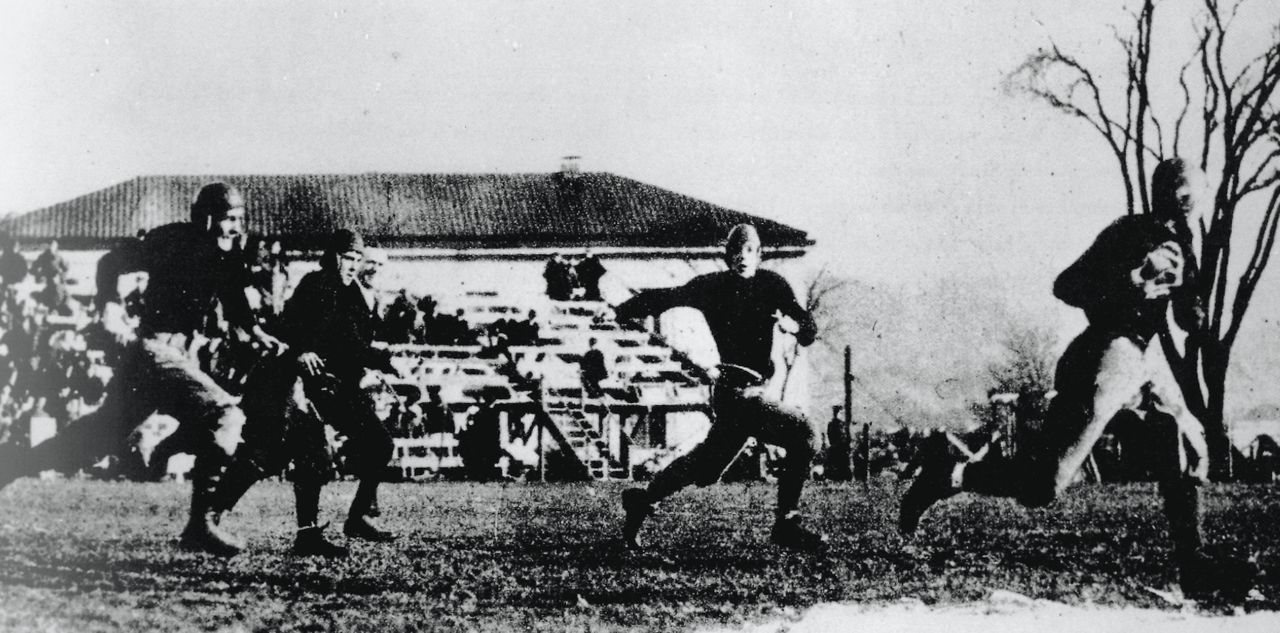Nov. 19, 2010
Notre Dame always will be thought of as the jewel of the Midwest when it comes to football tradition and higher education.
Situated in South Bend, Ind., Notre Dame is within manageable driving distances to Chicago, Indianapolis, Louisville, Detroit, and Columbus, Ohio, making the University a hub of higher learning among the most recognized cities in the region.
But Notre Dame’s reach extends far beyond cities within a few hours drive. From Los Angeles in the West to New York City in the East, Notre Dame carries a national presence like no other university in the country. It’s the foundation on which weekends like this one in the Big Apple are built.
A football reunion with Army at Yankee Stadium and all the events surrounding this weekend are as much of a celebration of history than just a sporting event. All the way back to 1913, when a young Irish team captain named Knute Rockne helped Notre Dame pull a 35-13 upset over mighty Army on the West Point campus, Notre Dame has rooted its place in the lore of the great state and city of New York.
“The 1913 game was what kind of put Notre Dame on the map,” says esteemed Notre Dame historian and Blue & Gold Illustrated Associate Editor Lou Somogyi. “That was the game that began to establish Notre Dame’s presence on a national scale.”
Almost 100 years later, Notre Dame returns to New York to become a part of the city’s history again in the first football game ever played at the new Yankee Stadium, just one more way to celebrate the most recognizable city in the United States, and one university’s place in it.
“Any student of Notre Dame football history knows the meaning of the Notre Dame-Army rivalry and, in particular, the history of that rivalry at Yankee Stadium,” says Notre Dame athletic director Jack Swarbrick. “It’s fitting that a Notre Dame-Army game will be the first football event in this fabulous facility. It’s also fitting that the 50th meeting in this great rivalry will take place in a venue with such great tradition for both programs.”
From television personality Regis Philbin, to legendary sportscaster Don Crique, to former longtime Notre Dame President Fr. Theodore Hesburgh, New York City and State have been the home to many renowned Notre Dame alumni. Notre Dame graduate and U.S. Rep. Peter King (R-NY) won a landslide victory Nov. 2 to hold onto his House seat and return to the important role as the chairman of the House Homeland Security Committee.
The influence of Notre Dame has become so deeply entrenched in the culture of New York City, the Broadway play “LOMBARDI” – written by Academy Award-winning playwright, Eric Simonson, and based on the best-selling Vince Lombardi biography “When Pride Still Mattered” from Pulitzer Prize-winning author David Maranis – opened in October to brisk ticket sales and strong reviews.
The relationship between Notre Dame and New York City actually began just weeks before the University was even established by Fr. Edward Sorin, C.S.C., in 1842.
Sorin and his six Holy Cross Brothers, came by boat to the United States from France and arrived in New York Harbor about two months before heading for Indiana to begin laying the roots for Sorin’s vision of a faith-based school and the best university in the United States.
Sorin actually said his first mass in the United States at St. Peter’s Church, the oldest Catholic Parish in New York City, in downtown Manhattan, not far from Ground Zero. A plaque inside the vestibule of the church commemorates the event. Sorin and his companions spent three days in New York City before embarking on the 24-day journey to Indiana.
In the early days of the University, only a handful of New Yorkers could boast being Notre Dame alumni. But as travel became more convenient and the reputation of Notre Dame blossomed, the number quickly grew.
Helping to fuel the active presence Notre Dame holds in the Big Apple is the Notre Dame Club of New York. The organization underwent steady growth through the early 1900s and under the leadership of then club president Monsignor Luke J. Evers (ND 1878), the organization became strong enough to attract Notre Dame president Rev. John W. Cavanaugh, C.S.C., to Manhattan in 1915 as the guest of honor and speaker for a banquet of alumni, dignitaries, city and state officials, and educators.
Notre Dame became the toast of the town, the event drew front-page headlines, and the University immediately built more credibility and attention in the city. The Notre Dame Club of New York has faced some struggles through its history, but it remains an important conduit between New York City and the University in Notre Dame.
Relevance built from both the football program and a growing alumni base brought opportunity for Notre Dame in New York, and by the mid 1920s, the annual football game with Army had created so much interest, it was moved from West Point and into the city. The 1923 game was played at Ebbetts Field in Brooklyn and the 1924 game was played at the Polo Grounds in New York City.
Riding the momentum of a national championship in 1924 and the timeless prose of New York Herald Tribune sportswriter Grantland Rice, describing Notre Dame’s Four Horsemen playing Army under a famous “blue-gray sky” that same season, the Notre Dame-Army game was moved to its new home in Yankee Stadium where it stayed for 22 straight years – save for 1930 when the game was played at Soldier Field in Chicago.
A crowd of more than 65,000 packed Yankee Stadium for the inaugural game in 1925. Army unceremoniously beat Notre Dame 27-0, but the little school from the Midwest was continuing to spread its wings.
“If you can make it there, you can make it anywhere,” Somogyi says. “Once you were able to tap into that market, that New York media market, that’s when the coverage just became extraordinary for Notre Dame. Once Notre Dame became that popular team, that adopted team in the East – and [head coach] Knute Rockne was the master at selling and promoting the school out there – that was humungous. For Notre Dame to go there every year was a huge presence.”
From 1925-46, Army and Notre Dame met 21 times at Yankee Stadium, producing some legendary moments. There was Knute Rockne’s “Win one for the Gipper” halftime speech in 1928. There were the four matchups from 1943-46 when both teams were ranked No. 5 or higher. There was the 1946 scoreless tie between No. 1 Army and No. 2 Notre Dame that has forever been known as “The Game of the Century.” In the 40’s alone, the two schools produced five Heisman Trophy winners, six national championships, and a following matched by none other in the country.
“That kind of media attention and interest is exactly what [Notre Dame] needed. I think the term `Subway Alumni’ really developed from that,” Somogyi says. “And Army was one of the superpowers of that time. It was renowned as the United States Military Academy which was automatically associated with the ultimate in manliness.”
The setting and circumstances are very different today as they were during the glory days of this important rivalry – the old Yankee Stadium is dust and rubble, there are no championships on the line and no Heisman Trophy candidates on display – but the lights still shine brightly.
“What an opportunity for West Point to put itself back into the national picture and do something that’s a part of our history,” said Army head coach Rich Ellerson. “This is a great part of our history. This is a symbol of our storied past.”
This weekend serves as a tribute as much as a football game. It’s a chance to revisit the roots of the most important opponent in Irish football history, celebrate the young men and women who protect our freedom, and provide another opportunity for Notre Dame to widen its footprint in New York City.
“This allows us to have during the regular season, effectively a special event, almost a bowl game like experience,” Swarbrick says. “It’s great for the student-athletes. It’s great for the University to promote itself in another market.”
Notre Dame versus Army doesn’t carry the same ring as it did 60 years ago – the two teams have played only three times in the last 24 years. But to be a part of the first-ever football game at the new Yankee Stadium adds another chapter to a rivalry that helped turn a little Midwestern campus into a university known worldwide.
“I’d like to pay homage to as much of that as I can … to try and honor our tradition as much as possible,” Swarbrick says. “[Note Dame] has such a rich history with football and most of that history in a meaningful way dates from 1913.”
In New York City, of course.
-ND-








